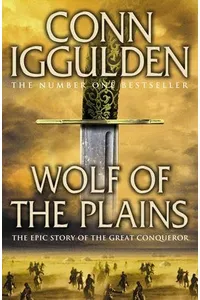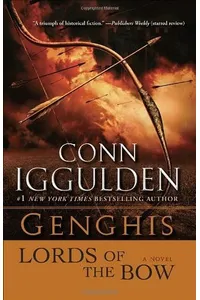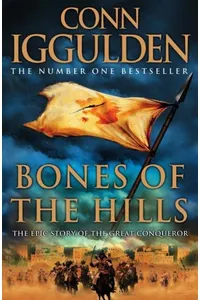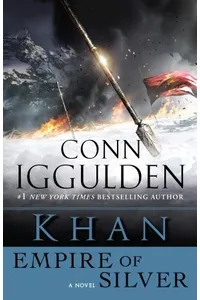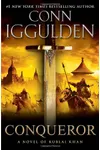Step into the windswept steppes of the Conqueror series, where the thundering hooves of Mongol warriors and the indomitable spirit of Genghis Khan await! Written by Conn Iggulden, this historical fiction saga spans five gripping novels that bring to life the brutal yet awe-inspiring rise of the Mongol Empire in the 12th and 13th centuries. With vivid storytelling and meticulous research, Iggulden transforms one of history’s most enigmatic conquerors into a character you’ll root for, fear, and never forget.
Perfect for fans of epic tales like Game of Thrones but grounded in real history, Conqueror blends heart-pounding battles, complex family dynamics, and the raw struggle for survival. Ready to ride alongside a legend? Let’s explore this unforgettable series!
How Conqueror Began
British author Conn Iggulden, already celebrated for his Emperor series about Julius Caesar, turned his sights to the Mongolian steppes after completing his Roman saga. Inspired by The Secret History of the Mongols, a 13th-century text chronicling Genghis Khan’s life, Iggulden spent years researching Mongol culture, warfare, and the harsh landscapes that shaped them. His goal? To craft a story that honored historical truths while weaving a narrative as thrilling as any fantasy epic. The result was Wolf of the Plains, the first Conqueror book, published in 2007, which set the stage for a series that would captivate readers worldwide.
The Heart of Conqueror
The Conqueror series follows Temujin, a young boy who becomes Genghis Khan, and his descendants as they forge the largest contiguous empire in history. Wolf of the Plains introduces Temujin’s brutal childhood, marked by betrayal and exile, as he unites warring tribes. Lords of the Bow sees Genghis leading his newly formed nation against the mighty Chin empire, showcasing his tactical genius. Bones of the Hills takes the Mongols westward, facing new enemies like the Shah’s armies, while Empire of Silver shifts to Ogedai, Genghis’s son, navigating the empire’s fragile succession. The finale, Conqueror, crowns Kublai Khan’s rise, blending scholarly ambition with ruthless conquest.
Themes of survival, loyalty, and the cost of power pulse through the series. Iggulden’s prose is cinematic, with battle scenes that plunge you into the chaos of clashing swords and thundering cavalry. The Mongolian setting—harsh steppes, nomadic camps, and fortified cities—feels alive, grounded by details like the Mongols’ horse-based warfare and tribal customs. While Iggulden takes creative liberties, his historical notes at each book’s end clarify fact from fiction, making the series both entertaining and educational.
The characters, especially Genghis, are the series’ heart. He’s no one-dimensional warlord but a complex figure—cunning, ambitious, yet haunted by loss. His sons and brothers, from the fiery Chagatai to the scholarly Kublai, add layers of rivalry and betrayal, echoing the family dramas of epic sagas.
Why Conqueror Resonates
The Conqueror series has left a lasting mark on historical fiction, offering Western readers a rare glimpse into the Mongol Empire’s staggering scope. Fans praise its immersive storytelling, with many calling it a gateway to studying Genghis Khan’s real history. Its blend of gritty realism and epic scope has earned comparisons to Bernard Cornwell’s works, while its focus on a non-Western empire broadens the genre’s horizons. The series’ ability to humanize a figure often vilified as a barbarian makes it a standout, sparking discussions about leadership, morality, and the clash of civilizations.
Readers on platforms like Goodreads and Reddit rave about the series’ addictive pace and vivid battles, with some planning trips to Mongolia after finishing! Its influence lingers in how it challenges stereotypes about the Mongols, showing them as strategic innovators, not just destroyers.
- About Conqueror
- Number of books: 5
- Publication years: 2007–2011
- Setting: 12th–13th century Asia
- Author: Conn Iggulden
Grab Wolf of the Plains and gallop into the Conqueror series’ thrilling world! Whether you’re a history buff or just love a good saga, this epic journey through the Mongol Empire will leave you hungry for more.
